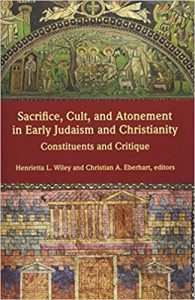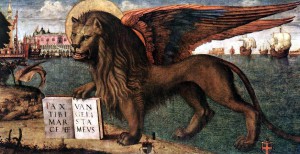 Recall our recent post, Why a Saviour Had to Suffer and Die? Martyrdom Beliefs in Pre-Christian Times. I have just come across a similar list making the same point: the blood of Jewish martyrs was believed to purify and cleanse the nation; the martyrs’ blood led to God’s forgiveness of the sins of the nation and the salvation of all.
Recall our recent post, Why a Saviour Had to Suffer and Die? Martyrdom Beliefs in Pre-Christian Times. I have just come across a similar list making the same point: the blood of Jewish martyrs was believed to purify and cleanse the nation; the martyrs’ blood led to God’s forgiveness of the sins of the nation and the salvation of all.
Third, the martyrs suffered and died because of the nation’s sin (2 Macc 7:18, 32; 12:39–42; 4 Macc 4:21; 17:21–22), just as the high priest offered the animal’s blood for sin on Yom Kippur (Lev 1:1–7:6; 8:18–21; 16:3–24).
Fourth, the martyrs’ blood was the required price for the nation’s national purification, forgiveness, and salvation (2 Macc 7:32–38; 4 Macc 6:28–29; 7:8; 17:21–22), just as the animals’ blood was the required price for Israel’s forgiveness on Yom Kippur (Lev 16:30).
Fifth, the martyrs’ deaths provided purification and cleansing for the nation (4 Macc 6:28–29; 17:22), just as the animals’ blood provided purification and cleansing for Israel on Yom Kippur (Lev 16:16, 30).
Sixth, the martyrs’ deaths ended God’s wrath against the nation (1 Macc 1:1–64; 2 Macc 7:32–38; 8:5; 4 Macc 17:21–22), just as the animals’ blood when appropriately offered at Yom Kippur placated God’s wrath against the nation (Lev 9:1–16:30).
Seventh, the martyrs died as representatives of and vicariously for the nation (2 Macc 7:18, 32; 4 Macc 4:21; 17:21–22), just as the animals were representatives of and were substitutes for the sins of the nation on Yom Kippur (Lev 16:1–30).
Eighth, God judged sin and granted forgiveness through the martyrs’ deaths in the narratives (2 Macc 6:12–7:38; 4 Macc 17:21–22), just as YHWH judged sin and granted forgiveness through the animals’ deaths on Yom Kippur (Lev 16:1–30).
Wiley, Henrietta L.. Sacrifice, Cult, and Atonement in Early Judaism and Christianity: Constituents and Critique (Resources for Biblical Study Book 85) (Page 263). SBL Press. Kindle Edition.
It would seem to be the most natural thing in the world for the Judeans who could interpret their martyrs deaths in such a way to imagine a similar fate, at least equally beneficial, for a messiah. This, especially if any thought of earthly military victory was utterly out of the question.
Wiley, Henrietta L., and Christian A. Eberhart. 2017. Sacrifice, Cult, and Atonement in Early Judaism and Christianity: Constituents and Critique. Atlanta, GA: SBL Press.

